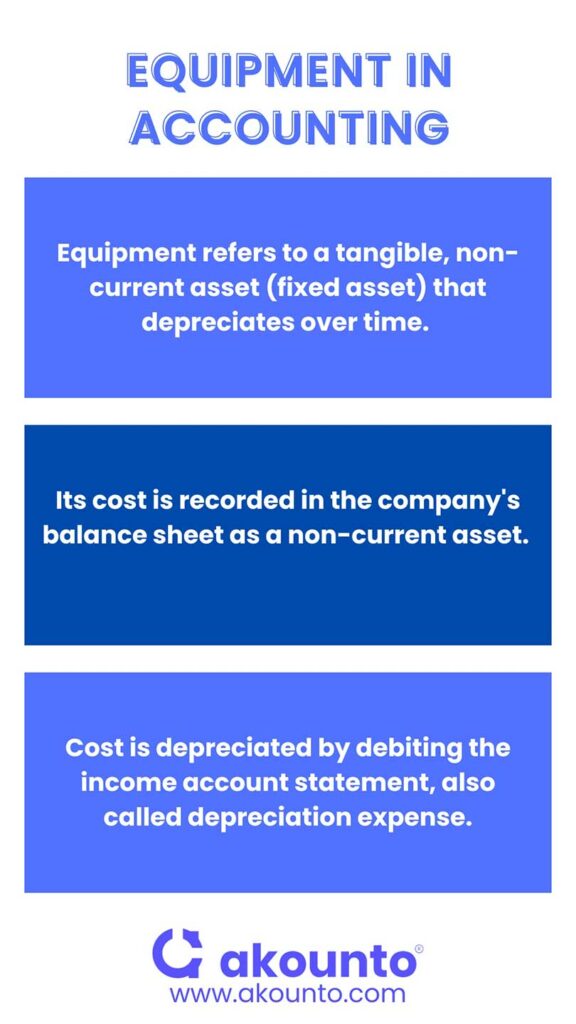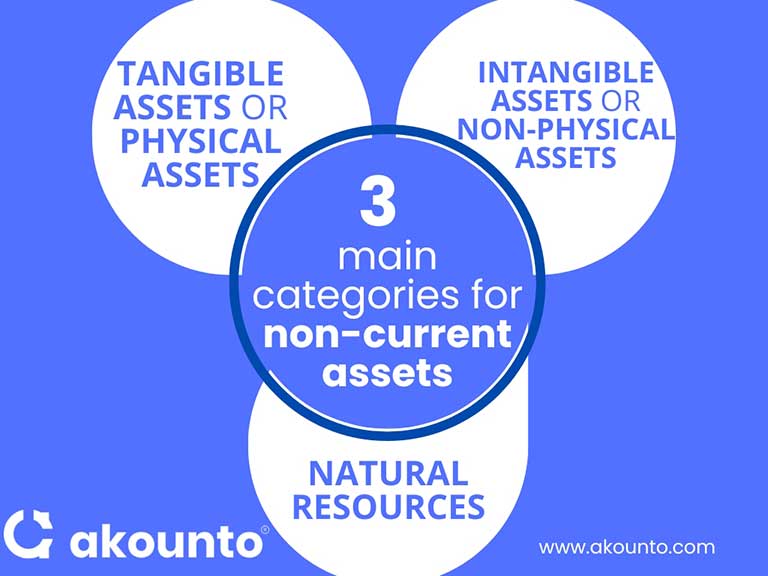Equipment is not a current asset. In accounting, equipment is classified as ‘non-current’ or ‘fixed’ assets. More precisely, equipment is a tangible non-current asset, a physical asset with a useful age.
Tangible non-current assets are the assets needed for businesses to operate. Unlike current assets, these cannot be converted into cash within a year. That is why business equipment acts as a long-term asset that can depreciate over time, but it is not a current asset.
Equipment required for business operations can also be considered a non-current asset and a liability. This is because these fixed assets can be made into ‘capital expenditures‘ spread over various years.
In other words, equipment is an asset that helps the business grow and incur greater sales. It remains a liability till your company pays it off in its income account statements.
This is especially useful for small business owners looking for investment. They can purchase the equipment for long-term growth but don’t need to sacrifice a significant portion of their profit for a large initial output.
The cost of the equipment or machinery incurred will slowly be accounted as expenses, which will, in turn, provide tax return benefits every reporting period. This amount is calculated by considering the equipment’s useful years, intrinsic value, and salvage value.
What is Equipment in Accounting?

Equipment refers to a tangible asset that depreciates over time. The equipment cost is recorded in the company’s balance sheet as a non-current asset. In accounting, the cost is depreciated by debiting the income account statement, also called depreciation expense.
At the same time, the balance sheet account gets credited as a contra asset account or Accumulated Depreciation.
Accumulated depreciation refers to the portion of a long-term asset’s cost or total cost that has been allocated to depreciation expense since the time it was acquired.
The cost of the equipment initially acts as an accrued expense. Then this total cost is depreciated as an expense every month. The amount depreciated depends on the initial value of the asset, its useful years, and salvage value. Here is a simple formula you can follow for calculating the yearly depreciation of an asset:
Depreciation Value per year = (Cost of Asset – Salvage value of Asset)/ Depreciation Rate per Year
For the monthly depreciation value, divide the depreciation value per year by 12. This depreciation expense will be accounted on the company’s monthly financial statements.
This same amount gets credited to the accumulated depreciation or the contra-asset account, which acts as an asset rather than a liability.
A balance sheet does not have a separate column or line for equipment. Tangible assets such as machinery and equipment are recorded as a contra asset account under the Property, Plant, and Equipment of the non-current assets column.
Equipment on the Balance Sheet

A balance sheet has three main categories for non-current assets:
- Tangible Assets are physical assets or property such as inventory, machinery, tools, and equipment.
- Intangible Assets are non-physical assets such as copyrights, patents, and a company’s brand name.
- Natural Resources, such as oil reserves and timber stands
Equipment is recorded as the tangible asset among the non-current assets on the balance sheet. Non-current assets are listed according to the above classification, after the current assets and before the liabilities and equity.
The ‘non-current assets’ are then added to the ‘current assets,’ or, more precisely, current assets depreciated. This will give the total assets a business owns. A company’s total assets reflect how much cushion a company has to fall back on.
As a non-current tangible asset on the balance sheet, equipment is treated as a long-term asset which is a capitalized cost depreciating over time. On the other hand, short-term assets include cash and cash equivalents, accounts receivable, inventory, etc., that a company uses to fund its day-to-day operations. These long-term assets add value to the company over long-term fiscal years and are commonly called Property, Plant, and Equipment.
Another way to look at it is that equipment or long-term assets provide value for more than one year. At the same time, a current asset is an asset that can be and is expected to be cashed out to gain profit within twelve months.
Capitalization and depreciation are the accounting treatments of fixed assets. Equipment and machinery are classified as capital goods used by the business to generate goods over an extended period. They are capitalized on the balance sheet at the time of acquisition and then depreciated as the asset loses its value.
One of the ways to determine the answer to the question – is equipment a current asset, is to determine the scale of consumption on the basis of the period. If an asset or liability is to be consumed or disposed of within one financial year, it is considered as current, otherwise non-current.
Examples of Other Non-current Assets
Non-current assets include all the expenses and assets that are not expected to be sold within one year. Current and non-current assets have separate columns on the balance sheet, and they are then further classified into tangible and non-tangible assets and sub-accounts.
Here are some other assets that can be classified as non-current assets in addition to equipment:
- GoodwillВ is an intangible asset that accounts for the excess price paid for an acquired entity, such as brand recognition or intellectual property.
- AnyВ prepaid assetВ that cannot benefit within the accounting year is non-current. For instance, if the rent has been paid for the next 24 months, the first 12 months will be considered a current asset. And the rent for the remaining 12 months will be accounted for as a non-current asset.
- Long-term investmentsВ such as bonds and stocks that companies own for a future appreciation in value are also included in the non-current assets on a balance sheet.
In this article, we answered the query, “is equipment a current asset.” For more such knowledgeable articles and information about accounting and related knowledge, visit Akounto blog.




